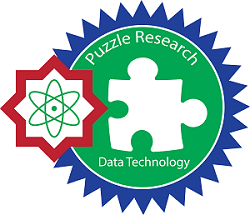Penerapan Algoritma K-Means dan K-Medoids untuk Mengelompokkan Data Negara Berdasarkan Faktor Sosial-Ekonomi dan Kesehatan
Application of K-Means and K-Medoids Algorithms for Grouping Country Data Based on Socio-Economic and Health Factors
Keywords:
country, healths, k-means, k-medoids, socio-economicAbstract
Increased development for a country can be assessed from the welfare of its people, therefore people's welfare is one of the goals for a country. The increasing welfare of the people in a country, shows the increasing development of development in that country. Assessment of development progress in a country can be seen from various factors, for example socio-economic factors and health. Non-Governmental Organizations (NGOs) have managed to raise around $10 million or the equivalent of 156 billion to be given to countries in need. However, they find it difficult to determine which countries need the assistance the most. As a result, this study employs data mining to categorize country datasets based on economic-social and health aspects by applying the K-Means algorithm compared to the K-Medoids algorithm. The purpose of the grouping is to show countries that need assistance, so that existing costs can be used strategically and effectively. According to the study, K-Means performs better than K-Medoids when clustering nation data using the K-Means and K-Medoids algorithms. The cluster results are determined using the Davies Bouldin Index (DBI), and K-Means has a DBI value of 0.095 and K = 5, where the validity value is near to 0.
References
N. Dwitiyanti, N. Selvia, and F. R. Andrari, “Penerapan Fuzzy C-Means Cluster dalam Pengelompokkan Provinsi Indonesia Menurut Indikator Kesejahteraan Rakyat,” Fakt. Exacta, vol. 12, no. 3, p. 201, 2019, doi: 10.30998/faktorexacta.v12i3.4526.
J. Majumdar, S. Naraseeyappa, and S. Ankalaki, “Analysis of agriculture data using data mining techniques: application of big data,” J. Big Data, vol. 4, no. 1, 2017, doi: 10.1186/s40537-017-0077-4.
M. Verma, M. Srivastava, N. Chack, A. K. Diswar, and N. Gupta, “A Comparative Study of Various Clustering Algorithms in Data Mining,” Int. J. Eng. Res. Appl. www.ijera.com, vol. 2, no. 3, pp. 1379–1384, 2012.
R. Mohemad, N. N. M. Muhait, N. M. M. Noor, and Z. A. Othman, “Performance analysis in text clustering using k-means and k-medoids algorithms for Malay crime documents,” Int. J. Electr. Comput. Eng., vol. 12, no. 5, pp. 5014–5026, 2022, doi: 10.11591/ijece.v12i5.pp5014-5026.
S. Nirmal, “Comparative study between k-means and k-medoids clustering algorithms,” Int. Res. J. Eng. Technol., vol. 839, pp. 839–844, 2019, [Online]. Available: https://www.irjet.net/archives/V6/i3/IRJET-V6I3154.pdf
R. R. A. Rahman and A. W. Wijayanto, “PENGELOMPOKAN DATA GEMPA BUMI MENGGUNAKAN GROUPING EARTHQUAKES DATA USING,” pp. 31–38, 2021.
S. Dewi, S. Defit, and Y. Yuhandri, “Akurasi Pemetaan Kelompok Belajar Siswa Menuju Prestasi Menggunakan Metode K-Means,” J. Sistim Inf. dan Teknol., vol. 3, pp. 28–33, 2021, doi: 10.37034/jsisfotek.v3i1.40.
D. Syaputri, P. H. Noprita, and S. Romelah, “Implementasi Algoritma K-Means untuk Pengelompokan Distribusi Sosial Ekonomi Masyarakat Berdasarkan Demografi Kependudukan,” Indones. J. Mach. Learn. Comput. Sci., vol. 1, no. 1, pp. 1–6, 2021.
H. Syukron, M. F. Fayyad, and F. J. Fauzan, “Comparison K-Means K-Medoids and Fuzzy C-Means for Clustering Customer Data with LRFM Model “ Perbandingan K-Means K-Medoids dan Fuzzy C-Means untuk Pengelompokan Data Pelanggan dengan Model LRFM,” MALCOM Indones. J. Mach. Learn. Comput. Sci., vol. 2, no. 2, pp. 76–83, 2022.
M. S. Alam et al., “Automatic human brain tumor detection in mri image using template-based k means and improved fuzzy c means clustering algorithm,” Big Data Cogn. Comput., vol. 3, no. 2, pp. 1–18, 2019, doi: 10.3390/bdcc3020027.
W. Utomo, “The comparison of k-means and k-medoids algorithms for clustering the spread of the covid-19 outbreak in Indonesia,” Ilk. J. Ilm., vol. 13, no. 1, pp. 31–35, 2021, doi: 10.33096/ilkom.v13i1.763.31-35.
M. Moghadaszadeh and H. Shokrzadeh, “An Overview of Expectation Maximization and K-Means family Clustering Algorithms in Data Mining Applications,” pp. 17–20, 2018, doi: 10.15242/dirpub.dir1017002.
M. M. Madbouly, S. M. Darwish, N. A. Bagi, and M. A. Osman, “Clustering Big Data Based on Distributed Fuzzy K-Medoids: An Application to Geospatial Informatics,” IEEE Access, vol. 10, pp. 20926–20936, 2022, doi: 10.1109/ACCESS.2022.3149548.
A. Prahara, D. P. Ismi, and A. Azhari, “Parallelization of Partitioning Around Medoids (PAM) in K-Medoids Clustering on GPU,” Knowl. Eng. Data Sci., vol. 3, no. 1, pp. 40–49, 2020, doi: 10.17977/um018v3i12020p40-49.
S. A. Abbas, A. Aslam, A. U. Rehman, W. A. Abbasi, S. Arif, and S. Z. H. Kazmi, “K-Means and K-Medoids: Cluster Analysis on Birth Data Collected in City Muzaffarabad, Kashmir,” IEEE Access, vol. 8, pp. 151847–151855, 2020, doi: 10.1109/ACCESS.2020.3014021.
M. Mughnyanti, S. Efendi, and M. Zarlis, “Analysis of determining centroid clustering x-means algorithm with davies-bouldin index evaluation,” IOP Conf. Ser. Mater. Sci. Eng., vol. 725, no. 1, 2020, doi: 10.1088/1757-899X/725/1/012128.
M. B. Agbaje, A. E. Ezugwu, and R. Els, “Automatic data clustering using hybrid firefly particle swarm optimization algorithm,” IEEE Access, vol. 7, pp. 184963–184984, 2019, doi: 10.1109/ACCESS.2019.2960925.
L. Enzo, B. Da, and N. M. A. X. Melton, “Incremental Cluster Validity Indices for Online Learning of Hard Partitions?: Extensions and Comparative Study,” no. i, 2020.
F. Cabitza, A. Campagner, and M. Mattioli, “The unbearable ( technical ) unreliability of automated facial emotion recognition,” 2022, doi: 10.1177/20539517221129549.
N. T. Luchia, H. Handayani, F. S. Hamdi, D. Erlangga, and S. Fitri Octavia, “Perbandingan K-Means dan K-Medoids Pada Pengelompokan Data Miskin di Indonesia,” MALCOM Indones. J. Mach. Learn. Comput. Sci., vol. 2, no. 2, pp. 35–41, 2022.











